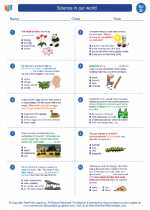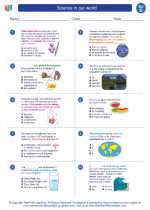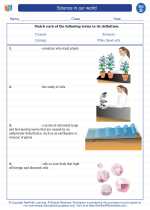Brass
Brass is a metal alloy made primarily of copper and zinc. It is known for its bright gold-like appearance and is commonly used in musical instruments, decorative items, and various mechanical parts.
Composition
Brass is typically composed of 70-90% copper and 10-30% zinc. The exact composition can vary based on the desired properties of the brass, such as strength, corrosion resistance, and color.
Properties
- Color: Brass has a gold-like appearance, although the exact hue can vary based on the zinc content.
- Strength: It is a strong and durable metal, making it suitable for various applications.
- Malleability: Brass is relatively malleable, allowing it to be easily shaped and formed into different objects.
- Corrosion Resistance: It is resistant to corrosion, especially when compared to iron or steel.
Uses
Brass has a wide range of uses, including:
- Musical Instruments: Brass is commonly used to make instruments such as trumpets, trombones, and saxophones due to its acoustic properties.
- Decorative Items: It is used in the production of decorative items, such as jewelry, sculptures, and household fixtures.
- Mechanical Parts: Brass is utilized in the manufacturing of valves, gears, bearings, and other mechanical components due to its strength and corrosion resistance.
Study Guide
To understand brass better, consider the following study guide:
- What are the primary components of brass?
- Describe the properties of brass.
- Provide examples of the uses of brass in everyday life.
- Compare and contrast the properties of brass with other common metals, such as iron and aluminum.
- Research the historical significance of brass and its use in different cultures.
Understanding the composition, properties, and uses of brass can provide valuable insights into the world of metals and alloys.
.◂Science Worksheets and Study Guides Fourth Grade. Science in our world
Study Guide Science in our world - 4th gr.
Science in our world - 4th gr.  Worksheet/Answer key
Worksheet/Answer key Science in our world - 4th gr.
Science in our world - 4th gr.  Worksheet/Answer key
Worksheet/Answer key Science in our world - 4th gr.
Science in our world - 4th gr.  Worksheet/Answer key
Worksheet/Answer key Science in our world - 4th gr.
Science in our world - 4th gr.  Vocabulary/Answer key
Vocabulary/Answer key Science in our world - 4th gr.
Science in our world - 4th gr. 

 Worksheet/Answer key
Worksheet/Answer key
 Worksheet/Answer key
Worksheet/Answer key
 Worksheet/Answer key
Worksheet/Answer key
 Vocabulary/Answer key
Vocabulary/Answer key

The resources above cover the following skills:
History and Nature of Science: A student should understand the history and nature of science. A student who meets the content standard should:
Develop an understanding that historical perspectives of scientific explanations demonstrate that scientific knowledge changes over time, building on prior knowledge.
Develop an understanding that scientific knowledge is ongoing and subject to change as new evidence becomes available through experimental and/or observational confirmation(s).